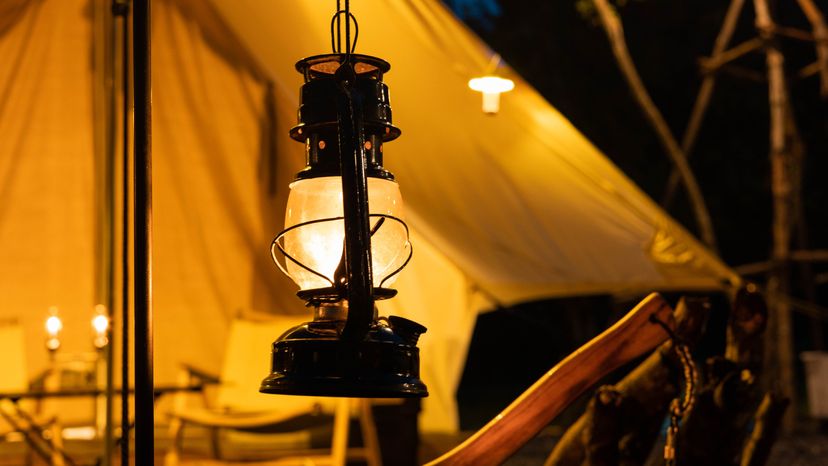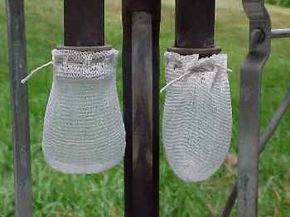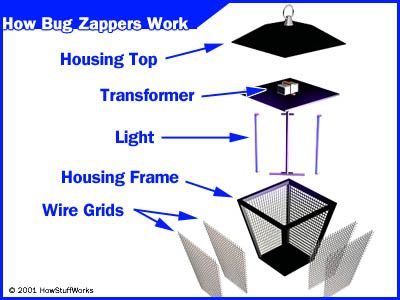Gas lanterns are incandescent lights. They burn a fuel like propane, white gas or kerosene to produce heat, and the heat causes the mantles to produce light. The mantles are a ceramic mesh that encase the flame produced by the lantern. Typical mantles look like this:
Mantles start out as silk fabric sacks impregnated with different oxides. The standard for decades has been the Welsbach mantle, which uses a mixture of thorium oxide, cerium oxide and magnesium oxide.
When the mantle is installed, you ignite the silk, which burns away and leaves behind a brittle ceramic shell as shown in the picture. This shell is extremely efficient at producing light because of the chemicals it contains and the large surface area of the mesh. The links on the next page contain a reference to the patent for the latest-technology mantle if you'd like to learn more.
So you can see that gas lanterns are very simple. Just about any heated material will produce light. The lantern burns fuel to produce heat. Gas lanterns happen to use mantles (instead of limestone blocks, for instance) because the mantles are very efficient at producing light from the heat they receive.
For more information on gas lanterns, incandescence and related topics, check out the links on the next page!



